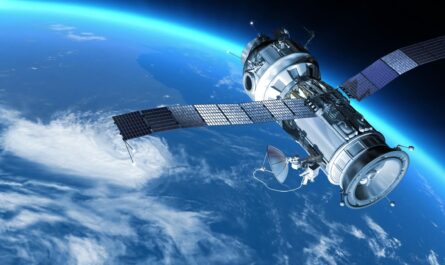A photodiode is a semiconductor device that converts light into an electrical current. When a photon of light strikes the diode, it may excite an electron and allow it to flow through the material to produce a photocurrent. Due to their ability to directly convert light into electricity, photodiodes are widely used as light sensors in applications ranging from optical communications to digital cameras.
Working Principle
Photodiodes function on the photovoltaic effect- the creation of voltage or electric current in a material upon exposure to light. When a photon strikes the diode’s PN junction, it may transfer its energy to free an electron if the photon energy exceeds the semiconductor’s bandgap. The energy allows the electron to overcome the potential barrier of the junction which creates a current. The larger the optical power or amount of light incident on the detector, the greater the number of electrons excited and the larger the output current. By measuring changes in this photocurrent, photodiodes can detect variations in light intensity and act as sensors.
Types of Photodiode Sensors
There are several types of Photodiode Sensors classified based on material, structure and spectral response range:
– Silicon Photodiodes: The most common type made from silicon which responds strongly in the visible and near-infrared range from 400nm to 1100nm. Used extensively due to low cost and simple fabrication process.
– Germanium Photodiodes: More sensitive than silicon in infrared region from 800nm to 1600nm. Often used in optical fiber communications operating at wavelengths around 1310nm and 1550nm.
– InGaAs Photodiodes: Made from Indium Gallium Arsenide alloy offering detection from 900nm to 1700nm. Expensive but suitable for applications in short wavelength infrared range.
– Avalanche Photodiodes: Exhibit internal gain mechanism which amplifies the photocurrent signal. Used for weak light detection and in applications requiring high sensitivity like optical communications receivers.
– PIN Photodiodes: Stacked P-intrinsic-N structure with wider intrinsic region leads to high speed, responsivity and quantum efficiency. Preferred for fast detection in applications like rangefinders and optical mice.
Major Applications
Photodiode sensors thanks to their reliability, robustness and ability to transduce light into electrical signals have enabled numerous technological advancements. Some key application areas include:
Optical Communications
Photodiodes are the most common optical receiver used extensively in fiber-optic systems for telecommunications and data networking. Their high-speed response allows gigabit data transfer rates over fiber.
Imaging Systems
Visible light and IR sensitive photodiodes are used as image sensors in applications like digital cameras, camcorders, barcode readers and infrared cameras. CCD and CMOS photodiode arrays enable image capture.
Optical Mice and Scanners
The movement of optical mice is tracked using an LED light source and position sensitive photodiode detectors. Scanners also use linear photodiode arrays for scanning documents and images.
Distance Measurement
LIDAR systems employ time-of-flight measurements using laser pulses and fast photodiodes to map surroundings and measure distances accurately for applications in self-driving cars, drones etc.
Optical Communications Revolution
The ability of photodiodes to receive optical signals at gigabit rates has enabled fiber-optic networks to massively scale up data transmission capacity. This has fueled the digital revolution, ensuring seamless connectivity for internet, streaming, cloud services etc. Fiber now carries over 95% of international communications and photodiodes play a vital role in underpinning global data networks. Their high-speed performance addresses the exponentially increasing bandwidth demands of 5G, internet of things and beyond.
*Note:
1. Source: Coherent Market Insights, Public sources, Desk research
2. We have leveraged AI tools to mine information and compile it




